Every day, thousands of prepaid and COD packages in India hit a no-delivery zone—where customers can’t pick calls, ignore SMS links, or forget to confirm delivery. Yet, one channel consistently cuts through all that noise: WhatsApp. What started as a simple messaging app has quietly become the go‑to space for resolving Non‑Delivery Reports (NDRs) in e‑commerce.
For logistics partners and D2C brands alike, the shift isn’t accidental—it’s behavioral. Indian shoppers live on WhatsApp; it’s where they chat, buy, and now, fix delivery issues. With faster open rates, conversational interfaces, and AI‑powered bots doing the heavy lifting, WhatsApp has turned NDR resolution from a manual follow‑up headache into a seamless customer touchpoint.
This blog dives into Why WhatsApp Is Becoming the Default NDR Resolution Channel in India and why brands now prefer WhatsApp for NDR workflows, how it impacts your recovery rate, and what frameworks high‑performing teams are using to automate this new delivery frontier.
What makes WhatsApp uniquely suited for delivery problem resolution?
Platform ubiquity and messaging behaviour patterns create frictionless communication unavailable through legacy channels
WhatsApp penetration in India reaches 487 million active users as of early 2025, making it the de facto communication standard across demographics and geographies. Customers check WhatsApp 23-27 times daily on average compared to 4-6 email checks and even fewer phone calls answered from unknown numbers. This usage asymmetry means NDR messages sent via WhatsApp reach customers in minutes rather than hours, compressing resolution windows that determine whether delivery succeeds or fails.
The platform enables rich media exchanges impossible through SMS limitations. Customers can send photos of their building entrance for courier navigation, share live locations pinpointing exact delivery spots, or record voice messages explaining availability constraints. Couriers reciprocate with delivery attempt photos proving they reached correct locations, images of incomplete addresses requiring customer clarification, or videos showing accessibility challenges. This visual communication resolves ambiguities that text-based SMS exchanges perpetuate through multiple frustrating back-and-forth cycles.
Conversational threading maintains context across multiple message exchanges, eliminating the repetition plague affecting phone-based resolution. When customers resume WhatsApp conversations hours after initial contact, the complete history remains visible without requiring them to re-explain situations to different support agents. This continuity dramatically reduces customer effort whilst enabling support teams to provide informed assistance rather than starting fresh with each interaction.
Real-time delivery creates immediate response opportunities during critical decision windows. Customers receiving WhatsApp NDR notifications within 15-30 minutes of failed delivery attempts remain engaged with the purchase and delivery process. SMS notifications arriving 2-4 hours later find customers mentally moved on to other activities, creating psychological distance from the transaction that reduces resolution motivation. The temporal proximity WhatsApp enables keeps delivery issues active in customer consciousness rather than allowing them to fade into forgotten problems.
How does two-way communication improve resolution rates?
Interactive dialogue surfaces underlying issues that broadcast notifications cannot address effectively
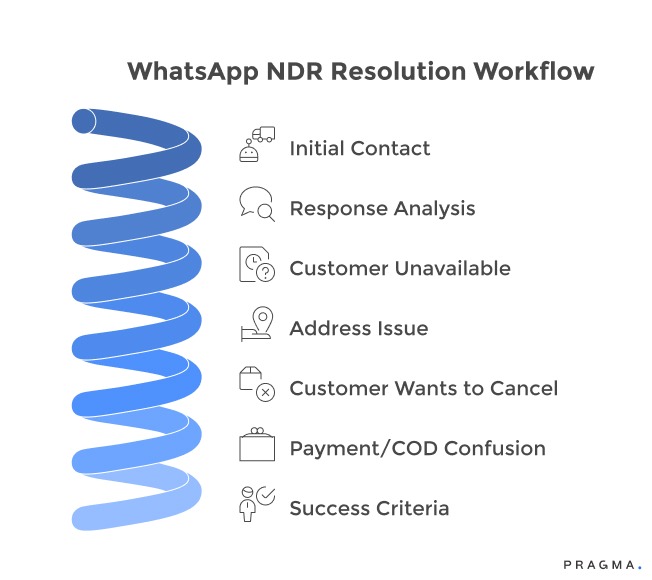
Traditional NDR workflows operate as one-way broadcasts: "Delivery attempt failed. Call this number to reschedule." This approach assumes customers understand what happened, know what information couriers need, and possess motivation to navigate resolution processes. WhatsApp conversations reveal that 61-68% of delivery failures involve complicating factors
- address ambiguities
- timing misunderstandings
- payment method confusions
- or product concerns
—that simple rescheduling cannot solve.
Dynamic questioning through conversational interfaces identifies actual problems rather than assumed ones. Support agents or chatbots asking "Were you unavailable, or did the courier not reach your location?"
receive answers revealing whether issues stem from customer behaviour or courier navigation failures.
This diagnostic capability enables targeted solutions: sending address clarification requests for navigation problems versus offering specific time slots for availability issues.
Immediate clarification prevents the assumption errors that plague delayed communication. When customers state "I was home all day," support can immediately probe: "Did you hear a doorbell or phone call?" rather than accepting the statement at face value and creating delivery attempt disputes. This real-time verification identifies disconnects—doorbell not working, phone on silent, family member answering door—that resolve through simple adjustments rather than escalating into formal complaints.
Negotiation flexibility creates mutually acceptable solutions through collaborative problem-solving. Conversations might reveal customers willing to collect packages from nearby courier offices to avoid second delivery attempts, or preferring weekend delivery despite longer wait times. These creative alternatives emerge through dialogue but remain hidden in rigid "reschedule or cancel" binary choices that traditional channels offer.
Why do customers prefer WhatsApp over phone calls for delivery issues?
Communication channel psychology reveals strong preference for asynchronous, non-intrusive interaction formats
Phone call anxiety affects 64-71% of Indian consumers under age 35 according to communication preference studies, creating inherent resistance to call-based NDR resolution. Customers avoid calling courier helplines not from apathy but from anticipated experience: navigating IVR menus, explaining situations to multiple people, experiencing hold times, and feeling pressured to make immediate decisions without time to consider options.
WhatsApp messaging allows thoughtful, asynchronous responses that accommodate customer schedules rather than demanding immediate attention. Customers can reply during commute breaks, lunch hours, or evening downtime without dedicating focused attention that phone calls require. This flexibility dramatically increases engagement rates—customers ignoring SMS callback requests often respond to WhatsApp messages within hours because the interaction fits naturally into their communication patterns.
Written communication provides documentation that spoken conversations lack, creating psychological comfort for dispute-prone situations. Customers uncertain about delivery details, addresses, or order contents prefer written exchanges where they can reference previous messages rather than relying on memory during live phone calls. This self-service capability reduces anxiety whilst giving customers control over interaction pacing and content.
Language flexibility in text communication accommodates India's linguistic diversity better than phone support structures. Customers comfortable reading English but hesitant speaking it can communicate effectively via WhatsApp whilst struggling with English-speaking call centre agents. Regional language support scales more cost-effectively through translation tools and multilingual chatbots than hiring support staff covering every language combination customers might need.
How does WhatsApp Business API enable systematic NDR management?
Platform capabilities designed for business communication create automation opportunities whilst maintaining personal touch
WhatsApp Business API allows automated message triggering based on delivery status webhooks, eliminating manual intervention for routine NDR scenarios. When courier systems mark delivery attempts as failed, API integrations automatically send personalised WhatsApp messages to affected customers within minutes. This automation achieves scale impossible through manual support team monitoring whilst maintaining response speed that manual processes cannot match.
Template messages approved by WhatsApp enable consistent communication whilst preserving personalisation through dynamic variables. Messages reference specific order details, customer names, product descriptions, and contextual information without requiring custom composition for each instance. This structured flexibility balances efficiency with the personalised feeling that drives customer engagement and brand perception.
Interactive buttons and quick replies streamline common resolution paths, reducing customer effort from typing full responses to single-tap selections. Messages might include buttons for "Reschedule Delivery," "Update Address," or "Cancel Order" that trigger appropriate workflows without requiring customers to articulate requests in natural language. This guided interaction proves particularly valuable for less digitally sophisticated customers who might struggle formulating written responses.
Media sharing capabilities enable visual problem-solving unavailable through text-only channels. Customers photograph incorrect addresses on packages, damaged products visible through transparent packaging, or local landmarks helping courier navigation. Support teams reciprocate with annotated maps showing delivery areas, photos of similar addresses clarifying confusion, or product images confirming variant details. This visual dialogue resolves issues that text descriptions perpetuate through misunderstanding.
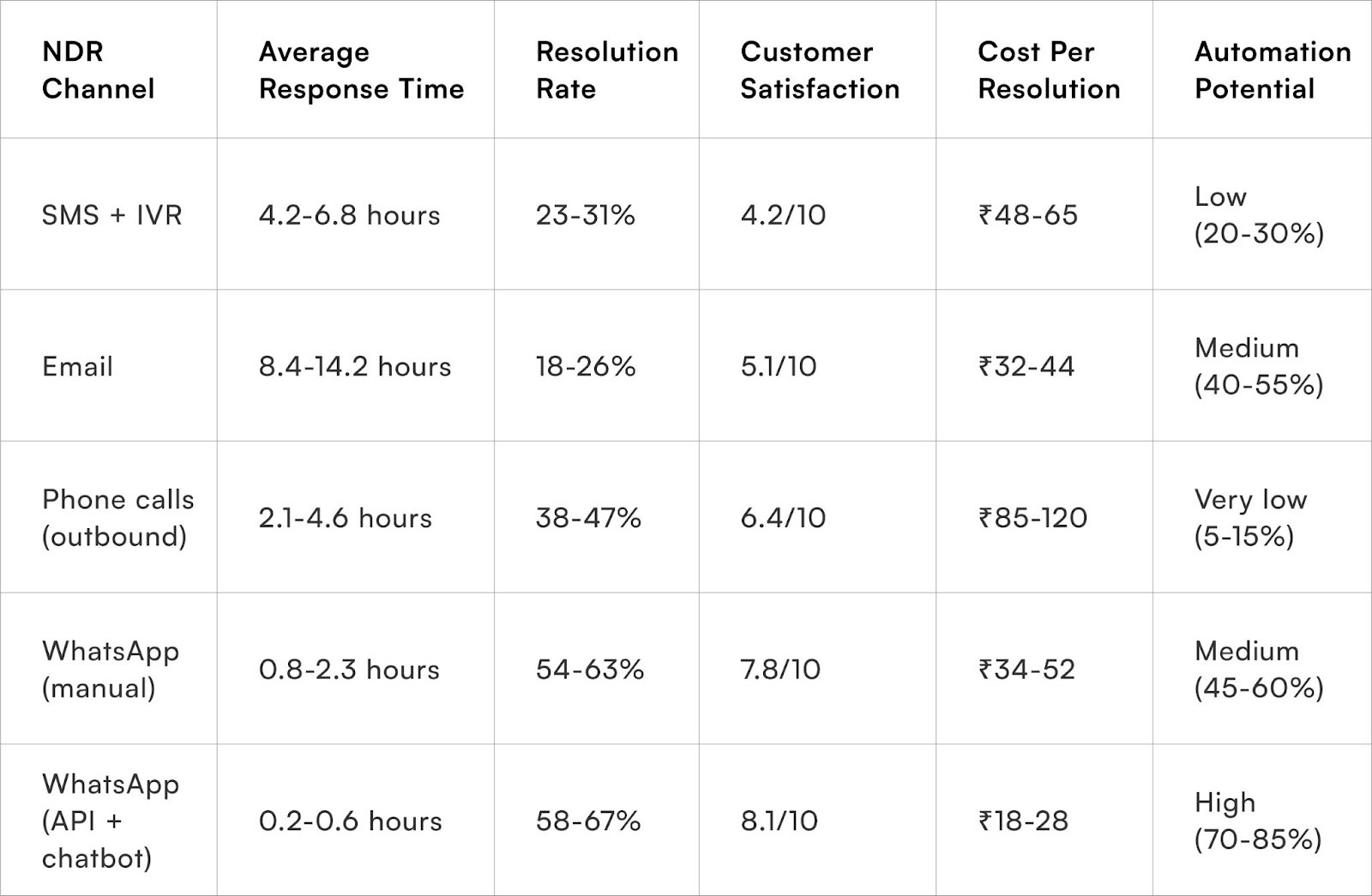
What role do chatbots play in WhatsApp NDR resolution?
Conversational AI handles routine scenarios whilst seamlessly escalating complex situations to human agents
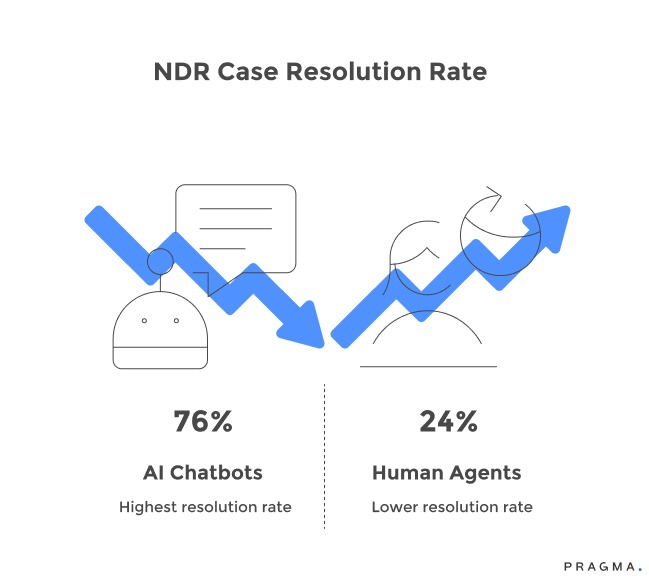
AI-powered chatbots manage 68-76% of straightforward NDR cases—simple rescheduling, address clarifications, delivery preference updates—without human intervention. These bots engage customers through natural conversation flows, ask diagnostic questions identifying problem types, and execute resolution actions like updating delivery instructions or scheduling new attempts. The automation enables 24/7 availability whilst freeing human agents for complex scenarios requiring empathy and creative problem-solving.
Intelligent handoff mechanisms ensure customers never feel trapped in bot loops when situations exceed automation capabilities. Bots detecting frustration signals—repeated similar questions, explicit agent requests, or scenarios outside programmed responses—immediately transfer conversations to human support with complete context. This seamless escalation prevents the negative experiences that rigid chatbot implementations create whilst maintaining efficiency for routine cases.
Natural language processing trained on Indian English patterns and regional language mixing handles the linguistic complexity characterising actual customer communication. Customers might message "Bhaiya, main ghar pe tha but koi aaya hi nahi" mixing Hindi and English, or use highly colloquial expressions requiring contextual interpretation. Modern NLP models understand these variations, extracting intent despite non-standard phrasing that rule-based systems would fail to process.
Learning systems improve over time through analysis of successful and failed resolution conversations. Bots identify which question sequences yield fastest resolutions, which response patterns indicate escalation needs, and which time slots customers most readily accept. This continuous improvement creates increasingly effective automation that handles growing case percentages whilst maintaining or improving satisfaction scores.
How does WhatsApp integration affect operational workflows?
Platform adoption requires process redesign beyond simple channel addition to existing communication stacks
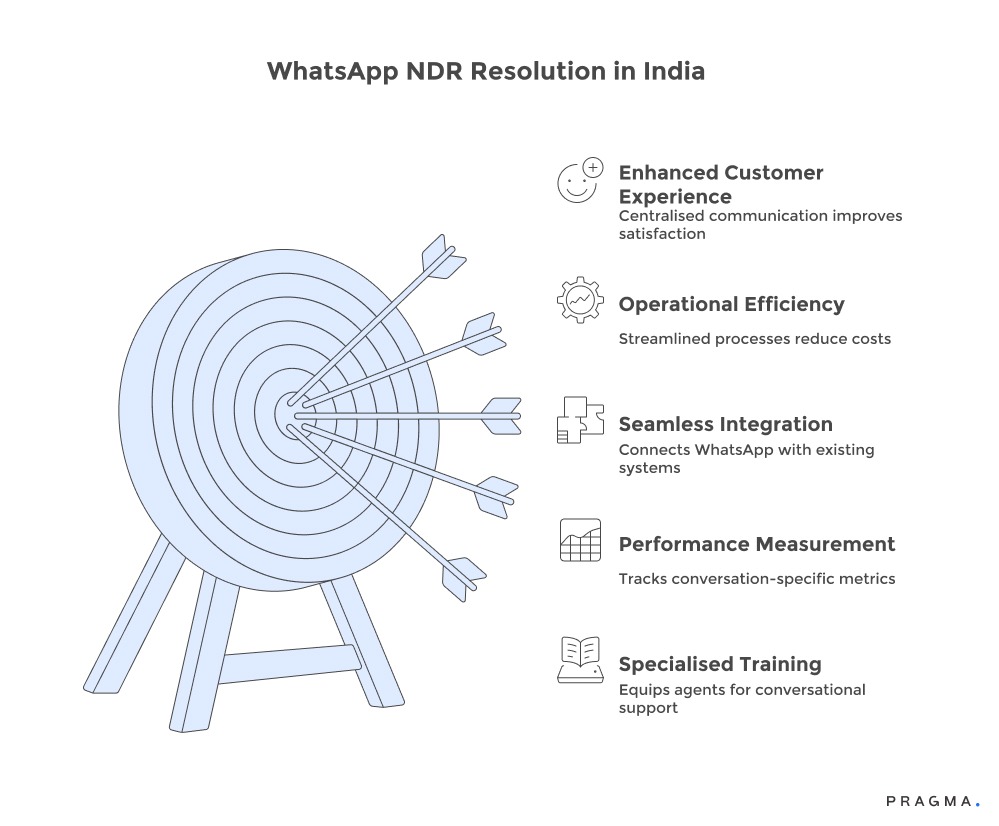
Why WhatsApp Excels as India's Primary NDR Resolution Channel
WhatsApp is transforming Non-Delivery Report (NDR) resolution in India by centralising customer communication. Instead of disparate SMS, email, and phone interactions, WhatsApp consolidates all order lifecycle conversations. This unified approach boosts operational efficiency and enhances customer experience through consistent channel usage and persistent context.
Effective WhatsApp Support Requires Specialised Training
Support teams need training to adapt to WhatsApp's conversational style, which differs from formal emails and rigid phone scripts. Agents must balance professional brand representation with the casual tone customers expect. This includes appropriate emoji usage, concise messaging for mobile readability, and maintaining conversation momentum with prompt yet unpushy responses.
Seamless Integration is Key to Success
Successful WhatsApp NDR programs depend on complex integrations with existing systems like order management platforms, courier APIs, CRM databases, and support ticketing tools. The WhatsApp Business API must facilitate real-time data exchange for order updates, delivery instructions, courier notifications, and conversation logging. While these technical integrations require investment, they deliver the cohesive experience that makes WhatsApp NDR resolution superior to fragmented alternatives.
Measuring Performance in a Conversational Environment
Performance measurement for WhatsApp shifts from traditional metrics like call handle time to conversation-specific indicators. These include response time, message count to resolution, customer satisfaction ratings, and resolution rates by scenario type. Such WhatsApp-centric metrics guide operational optimisation and enable fair agent performance evaluation, accounting for channel differences compared to phone support benchmarks.
Why does WhatsApp reduce customer support burden despite increased communication volume?
Asynchronous communication and visual context sharing create efficiency gains offsetting higher message frequencies
Key Advantages of WhatsApp for NDR Resolution:
- Enhanced Agent Productivity:
Support agents can manage 8-12 concurrent cases via WhatsApp, a substantial increase compared to the 1-2 phone calls they can handle simultaneously. The asynchronous nature of WhatsApp allows agents to respond to multiple customers during natural pauses in conversations, eliminating hold times and reducing the stress associated with back-to-back voice calls.
- Reduced Repetition and Faster Resolution:
WhatsApp's persistent conversation history eliminates the need for customers to repeatedly explain their issues or provide order numbers. Agents have immediate access to complete chat threads, allowing them to quickly understand the context and offer faster resolutions. This efficiency benefits both customers, who experience quicker support, and agents, who can handle more cases per shift.
- Effective Visual Communication:
Visuals are often more efficient than verbal descriptions. Customers can quickly share photos of their building entrance or delivery issues, providing agents with critical information in seconds. This visual input enables support agents to make faster and more accurate decisions compared to interpreting ambiguous text or verbal guidance.
- Seamless Self-Service and Automation:
WhatsApp conversational flows can integrate self-service components to deflect routine queries. Customers can receive instant automated responses with tracking links and estimated delivery times for "When will my order arrive?" inquiries. Simple rescheduling requests can be handled through button-based time slot selections without agent involvement. This selective automation manages high-volume routine queries, freeing up human agents to focus on more complex scenarios, and avoiding the negative experiences often associated with rigid Interactive Voice Response (IVR) menus.
To Wrap It Up
WhatsApp's emergence as India's primary NDR resolution channel reflects broader shifts in consumer communication preferences favouring asynchronous, visual, and conversational interactions over legacy phone and SMS systems. The platform delivers measurable improvements in resolution rates, customer satisfaction, and operational efficiency whilst aligning with how customers naturally communicate in personal contexts.
Analyse your last 200 NDR cases to calculate current resolution rate, average time-to-resolution, and cost-per-case, then model the economic impact of shifting these cases to WhatsApp-based workflows at 60% resolution rates.
Sustained success requires treating WhatsApp as foundational communication layer rather than supplementary channel added atop existing systems. Brands that reimagine entire post-purchase communication workflows around WhatsApp's conversational model—spanning order confirmations, shipping updates, delivery coordination, and issue resolution—achieve 34-42% better customer retention and 28-35% higher repeat purchase rates beyond immediate NDR resolution improvements. The platform's communication advantages compound across customer lifecycle stages when implemented systematically rather than deployed narrowly for isolated use cases.
For D2C brands seeking to modernise delivery communication and reduce RTO losses, Pragma's WhatsApp commerce platform provides Business API integration, intelligent chatbot automation, agent workflow tools, and analytics dashboards that help brands achieve 58-67% NDR resolution rates whilst reducing per-case handling costs by 40-55% through conversational communication optimised for Indian customer preferences.

FAQs (Frequently Asked Questions On Why WhatsApp Is Becoming the Default NDR Resolution Channel in India)
1. Why is WhatsApp better than SMS or phone calls for NDR resolution?
WhatsApp delivers 98%+ message open rates and enables interactive confirmation, real-time address edits, and multi-language support. Unlike SMS or outbound calls, which are often ignored or missed, WhatsApp is instantly accessible and trusted by 94% of Indian internet users.
2. Does WhatsApp actually increase NDR recovery rates compared to traditional channels?
Yes—e-commerce brands using automated WhatsApp flows report 25–40% higher NDR recovery rates versus call centre or SMS approaches. Engagement is also faster: 70% of replies happen within the first hour, reducing RTO risk and blocked cashflow.
3. Is WhatsApp secure and compliant for sensitive delivery conversations?
WhatsApp Business API is end-to-end encrypted, supports consent workflows, and tracks every message for compliance. Brands can automate and document customer interactions for audits, all while maintaining privacy.
4. Can WhatsApp NDR automation be personalised and multi-channel?
Yes—brands can personalise messages by NDR reason (address issue, customer unavailable), send via both WhatsApp and fallback SMS, and escalate seamlessly to IVR or human support when WhatsApp responses stall, optimising for both scale and personal engagement
Talk to our experts for a customised solution that can maximise your sales funnel
Book a demo



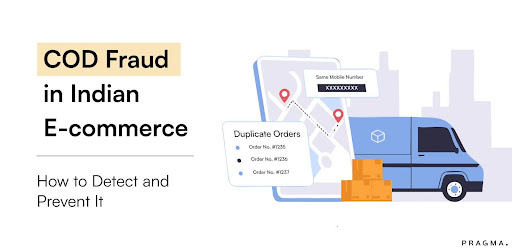
.png)